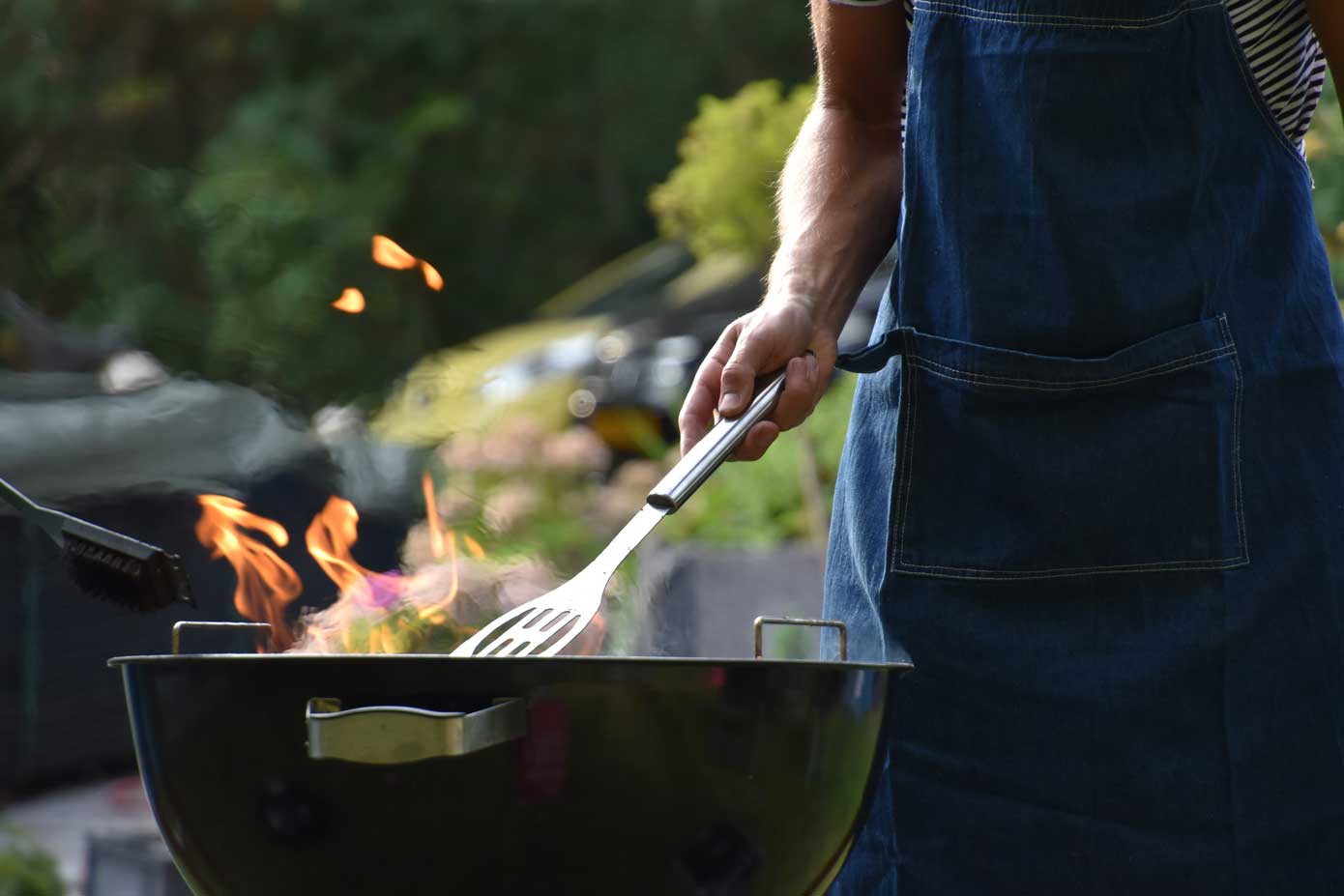Holly Hughes interrogates the environmental impact of the barbecue and recommends some simple switches to make this summer …
Every Fourth of July, it is estimated, 60m barbecues are lit across the US. The carbon footprint of these grills – through their consumption of charcoal, lighter fluid, gas, and electricity – is equivalent to the energy consumption of 20,000 households for one year. Put more starkly, this one celebratory meal releases 225,000 metric tons of decidedly uncelebratory carbon dioxide into the air.
As a nation, we cannot boast such a staggering statistic. Many of us probably wish our temperamental summer would allow us such excessive smouldering. However, one charcoal barbecue session alone releases the same amount of carbon dioxide as a 40km car journey. With restrictions set to encroach further into our summer, most of us will once again flit to our gardens and patios to fire up the barbie in the hope of spicing up another grounded summer. So, in the interest of bringing the heat to our grills but not to our suffering globe, we need to get the most (and release the least) from our barbecues this summer.
A quick note for anybody hoping to purchase a new grill this summer. Firstly, check consumer ratings and the company’s reputation to ensure you choose a well-constructed model that will stand the test of time. The simplest way to lower your consumption and prevent creating further unnecessary waste on this overfilled planet is by investing in pieces that will stand the test of time (and Irish weather). Secondly, be realistic about size. The bigger the grill, the bigger the resources needed to heat it, the larger the carbon emissions. Barbecues, once preheated, cook food quickly: a small grill can easily supply a feast.
Most Irish barbecues rely on gas or charcoal as fuel. Both present contradictions relating to environmental impact. A study investigating the respective carbon footprints in the lifecycle of charcoal and LPG found that from production to transport and burning, charcoal releases three times the emissions of gas. This study upholds the consensus that gas is not only a better environmental choice for your barbecue, but is the more efficient, convenient and safe option. Gas’s lower emissions stem from the fact it takes less time to preheat and burns cleaner than charcoal. However, the fact remains that gas – even natural gas – is a non-renewable resource.
Charcoal, meanwhile, comes from a renewable source: wood. Where the carbon generated by the production and burning of gas cannot be recouped, each tree cut down to be used for charcoal can be replaced by a carbon-storing replacement, thereby helping to negate the footprint of the fuel. Does this make charcoal the eco-warrior choice? Not exactly.
We need to get the most (and release the least) from our barbecues this summer
You see, most charcoal we buy for our barbecues contains additives and pollutants that pump carbon monoxide and other toxins into the air. Charcoal also requires lighter fluid – something gas doesn’t – which further increases its environmental footprint as well as its health risk. In fact, it has been proven that additive-laden charcoal and its accompanying lighter fluid directly contribute to ground-level ozone. Add to this the fact that charcoal takes longer to heat up and longer to cook food evenly and you have reasons to avoid charcoal at all costs. However, lovers of the heady smokiness only charcoal can swathe our sausage sizzle in need not give up hope. There are simple solutions to the problem of charcoal’s toxification.
Firstly, switch to natural or lump charcoals, sustainable alternatives made from 100 per cent waste wood or furniture scraps and free from additives or chemicals. As the most natural form of charcoal, these options burn slower, hotter and cleaner and produce a lot less ash. Ensure you source lump charcoal from ethical local suppliers, always looking for the FSC certification. A quick Google search will yield a plethora of suppliers who will deliver lump charcoal to your door. Barbecue giant Weber’s lumpwood charcoal is all-natural and FSCcertified. Now ditch your inner arsonists’ penchant for lighter fluid and invest in a widely available and inexpensive charcoal chimney starter. Lastly, try and reuse charcoals by cooling them with water after use, preserving them for your next sizzle.
What you put on your barbecue is every bit as important as the fuel you put in it. Fatty meats drip grease that burns, releasing harmful pollutants into the atmosphere. Avoiding meat can drastically decrease a barbecue’s carbon footprint. A switch from beef to chicken can save 2.6kg of CO2 emissions per serving, reducing one burger’s carbon footprint from 5.8kg of CO2 to 3.2kg. A vegan burger has a footprint of 2kg. Food for thought.
Single-use, non-recyclable, non-compostable disposable barbecues are unequivocally bad for the environment, at a time when their popularity is sadly reaching new heights (adding greater height to the waste piled into landfill). Luckily, we have sustainable alternatives to ensure picnic plates heavy with smoky burgers, potato salad and coleslaw can continue to be passed around until September. Use natural gas, LPG, or lump charcoal and every day can be the Fourth of July.
LOVETHEGLOSS.IE?
Sign up to our MAILING LIST now for a roundup of the latest fashion, beauty, interiors and entertaining news from THE GLOSS MAGAZINE’s daily dispatches.











